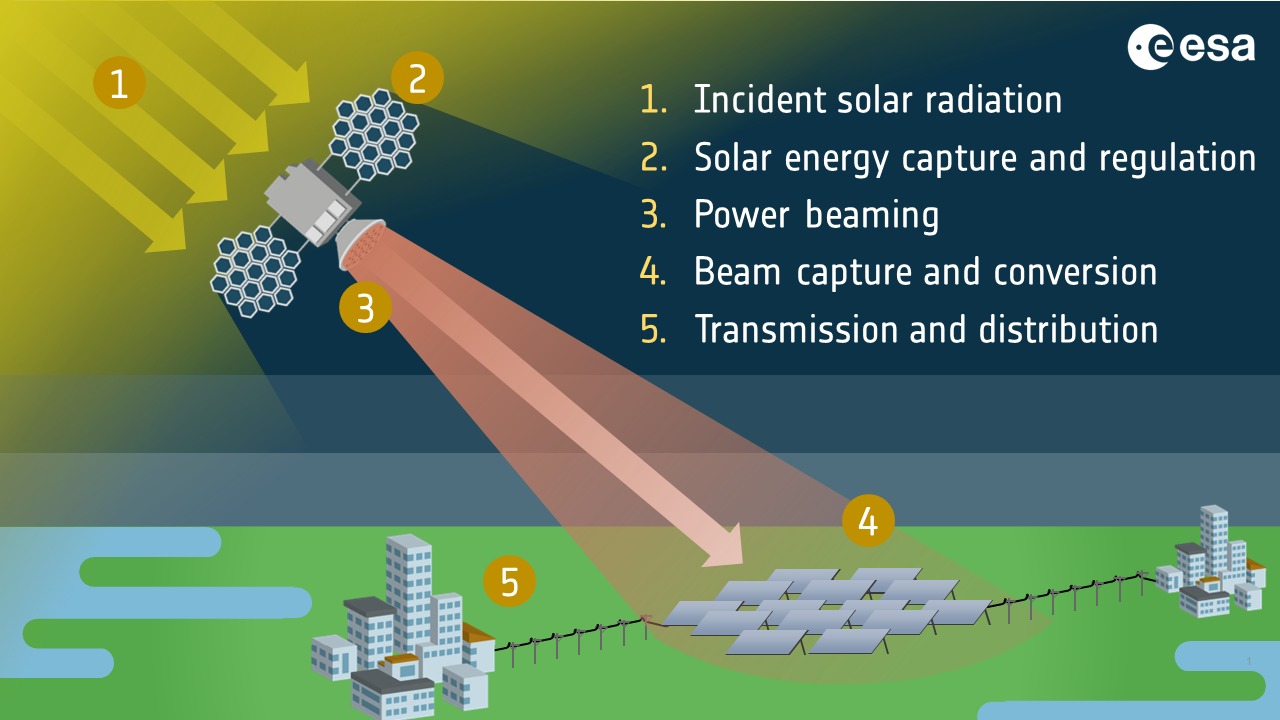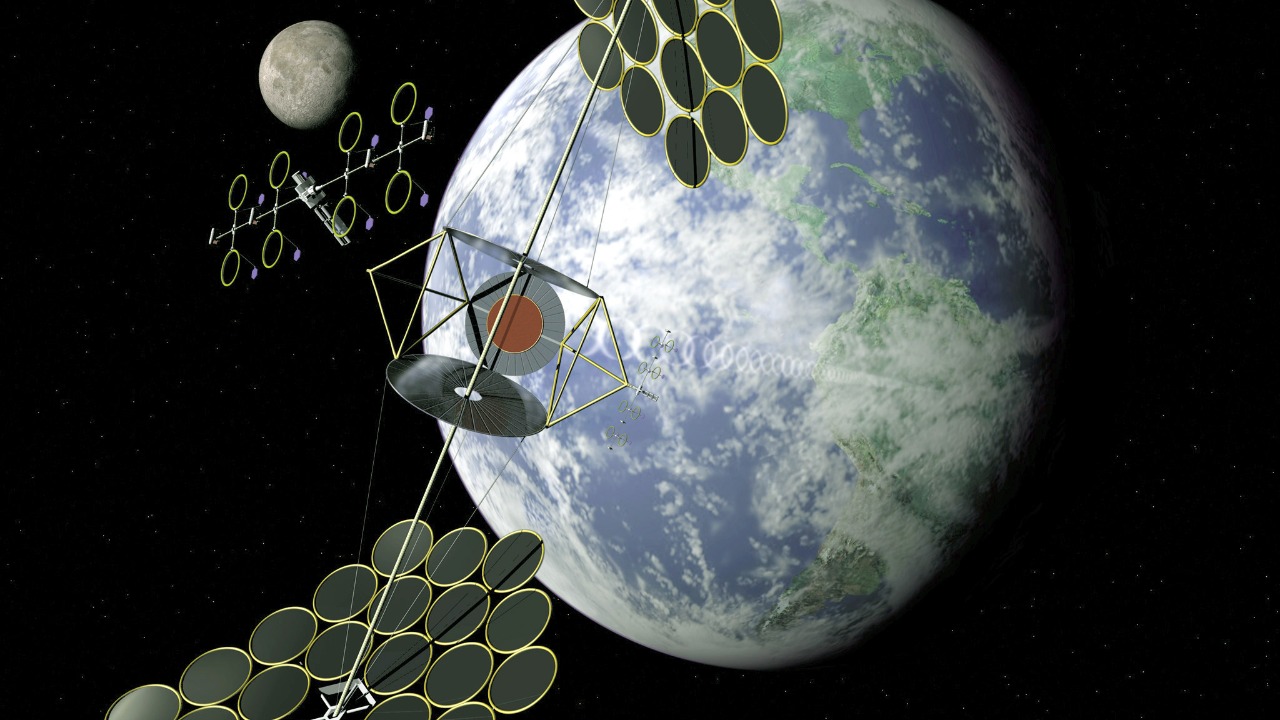
The future of energy is a pivotal conversation, with solar power taking center stage. Two key methods of harnessing this energy are ground-based solar power and space-based solar energy beam. This exploration delves into their mechanisms, pros, and cons, and how they could potentially reshape our energy future.
Understanding Solar Energy Capture on Ground

Ground-based solar power involves the use of solar panels, which are typically made of silicon cells that convert sunlight into electricity. This technology, commonly known as photovoltaic (PV) technology, has been widely used from residential rooftops to large-scale solar farms. The sunlight that hits the solar panels excites the electrons in the silicon cells, creating an electric current. This DC (direct current) is then converted into AC (alternating current) for use in homes and businesses.
There are several advantages to using ground-based solar power. Firstly, it is a renewable source of energy, reducing our dependency on fossil fuels. Secondly, advancements in technology have made solar panels more efficient and affordable. Thirdly, solar power has the potential to decentralize power generation, giving individual homeowners the ability to generate their own electricity. However, there are also limitations. Solar power is dependent on weather conditions and geographical location, with areas closer to the equator receiving more sunlight. Additionally, the storage of solar energy for use during night-time or cloudy days remains a challenge, necessitating the need for efficient and cost-effective energy storage solutions.
Decoding Solar Energy Beaming from Space

Space-Based Solar Power (SBSP) presents an intriguing alternative to ground-based solar power. The concept involves using satellites in space to collect solar energy, convert it into microwave or laser energy, and then beam it back to Earth. This energy is received by ground-based stations and converted back into electricity. The fundamental advantage of SBSP is that it can overcome the limitations of weather conditions and day-night cycles, providing a continuous source of solar power.
While the idea of SBSP has been around for decades, recent developments have brought it closer to reality. China, for instance, recently made headlines for successfully demonstrating the use of solar power satellite technology, as reported in this article. However, significant challenges remain in terms of the cost of launching and maintaining satellites, as well as the safety and efficiency of energy transmission.
Comparing Efficiency and Sustainability

In terms of efficiency, ground-based solar power typically has an energy conversion efficiency of around 15-20%, depending on the type of solar panel used. However, this can be significantly higher in SBSP, given the continuous and intense sunlight available in space. According to a study, the energy transmission efficiency of SBSP can also be high, provided the right frequency and power level are used for the beamed energy.
From an environmental perspective, both methods have the potential to significantly reduce carbon emissions compared to fossil fuel-based power generation. However, the launch and maintenance of satellites for SBSP could have environmental implications, including the generation of space debris. On the other hand, the production and disposal of solar panels also have a carbon footprint and resource use implications, as discussed in this research.
The Future of Solar Energy: Challenges and Opportunities

Looking forward, both ground-based solar power and SBSP face technical and policy challenges. On the technical front, improving the efficiency and cost-effectiveness of solar panels and energy storage for ground-based solar power, and the cost and safety of energy transmission for SBSP, are key areas of focus. Policy challenges include creating supportive regulatory frameworks and addressing concerns around the use of space for power generation.
Despite these challenges, the opportunities are immense. Solar power, whether ground-based or from space, has the potential to play a pivotal role in achieving energy security and reducing carbon emissions. As technology continues to evolve and costs come down, we can expect to see an increasing shift towards these methods of harnessing solar power.
Case Studies of Solar Energy Beam and Ground Capture

Ground-based solar energy has already seen successful implementations worldwide. The Solar Star project in California, USA, for instance, is one of the world’s largest solar farms, with a capacity of 579 megawatts. On the other hand, SBSP remains largely in the realm of research and experimentation. However, several ongoing projects hold promise, such as those by NASA and the China Academy of Space Technology. NASA, for example, has been studying the feasibility of clean space-based solar power beaming, as reported in this article.
Another noteworthy venture is the recent experiment by China, where they successfully beamed solar power from a satellite in space to a receiver on Earth. This achievement, as mentioned earlier, is a significant step towards making SBSP a reality. As these case studies illustrate, while ground-based solar power is already making a significant impact, SBSP holds the potential to take solar energy capture to new heights.